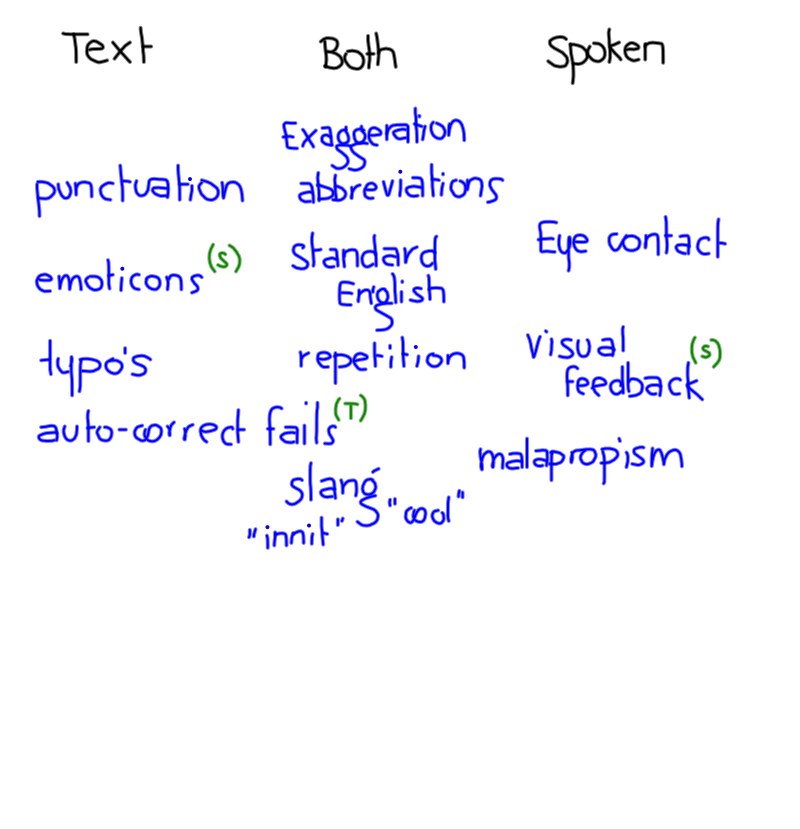Discriminating Between Spoken and Text Language
Today we explored a wide range of language features that are typical of spoken and multi-modal language and classified them in three categories:
(The boys were asked to share with each other the devices or features that they were the most interested in or uncertain of, rather than the ones they were the most sure were correct. We didn’t want the safe answers)
Spoken-Only
These features of language are only present in spoken language. Many of these were related to the sound of words or to paralinguistic features such as facial expression or gesture. Accent was deemed to be a spoken-only form, though we did agree that sometimes attempts can be made to add ‘accent’ to text communication
Text-Only
These features were present only in text communication
Both
These features were present in both spoken and text communication.
Mobility
We then looked at the mobility of these devices. We decided many features of text communication, such as the emoticons, were representations of aspects of spoken conversation. They are used to enrich the text with symbols for features that are a natural part of real-time communication – like a smile. We talked about Irony and sarcasm and how subtle the cues to this often are.
An interesting conversation about how the term lol that started in the text messaging domain has now shifted back into spoken language – but when someone says lol, they are invariably being sarcastic.


